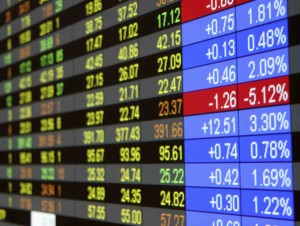Inflation is defined as the a general and sustained rise in prices. Cost Push Inflation is one of the causes of inflation. It essentially means that when the prices of one or more inputs that go into making a good rise, the cost and hence the price of that good goes up. Read in detail about cost push inflation http://vskills.in/certification/blog/causes-of-inflation-part-ii-cost-push-inflation/ .The rise in prices of food articles and other primary articles like metals, mineral oil (which together account for industrial raw material) caused by a surge in global commodity prices have been raising the cost of production for industries. This has put non-food manufactured products inflation on an upward trend, suggesting that producers are able to pass on the cost increases, given higher demand to the consumers. Hence non-food manufactured inflation, or the core inflation is a more accurate measure of demand-induced inflation.Moreover, the pass-through from non-food international commodity prices to domestic raw material prices has increased particularly in the recent years reflecting growing interconnectedness of domestic and global commodity markets.
While the persistence of inflation on protein items has increased, it still has a relatively smaller share in overall Wholesale price index (WPI) inflation. Also since the non-food manufacturing component has a higher weight of 55% in the calculation of the WPI, the WPI is more sensitive to price changes in this component, which are in turn influenced by international prices.
- The reason behind the surge in international commodity prices can be explained by the very low interest rates prevalent in countries facing the threat of recession. Low interest rates pull up aggregate demand and make money available at cheaper rates (‘bring in liquidity in the markets’ to quote in technical terms). This propels prices upwards.
- Furthermore, prices of manufactured items go up when food and other primary articles’ inflation is persistent. High food prices cause rise in the production cost in food processing industries and other industries where these are used as inputs. Workers working in these industries may demand higher wages due to rising food prices, which adds on to the already high production cost. Thus inflation in the cost push from spreads from the agricultural sector to the other sectors of the economy; including the manufacturing sector and is here to stay if demand is also strong to cement the high prices.
The contribution of the manufacturing sector to inflation has risen, as primary items’ inflation has drifted on to it. The Indian economy is said to be a consumer driven economy, and adding fuel to the fire are the fatter paychecks which are being dolled out to corporate employees as well as rising rural incomes. Thus the prevalence of strong consumer demand in spite of rising prices does not come as a surprise. The wage-price spiral continues. Prolonged high inflation, even if originating from the supply side, gives rise to increased inflation expectations* and causes general prices to rise.
Read about inflation expectations here: http://vskills.in/certification/blog/modern-theory-of-inflation/





12 Comments. Leave new
Good work!
Very well written and thoughtful 🙂
Good choice of topic !
Unique topic..!
Thus we can say that Non-Food inflation is positively related to Food Inflation.
Great choice of topic. Nice work..
good efforts!
Good work 😀
Very well written
good job
well done writing this article!
Nice work